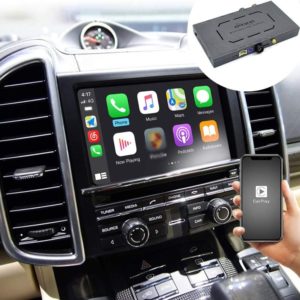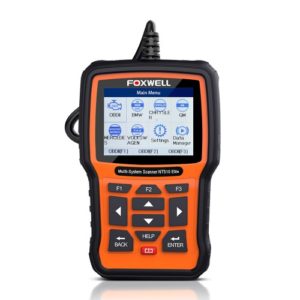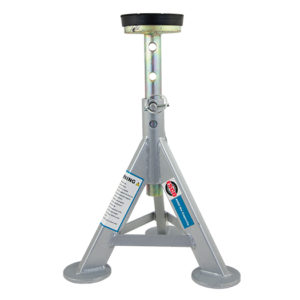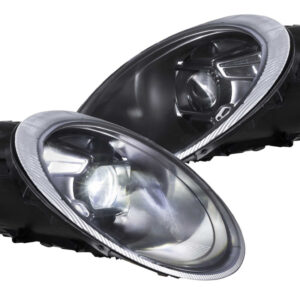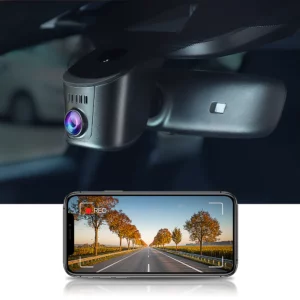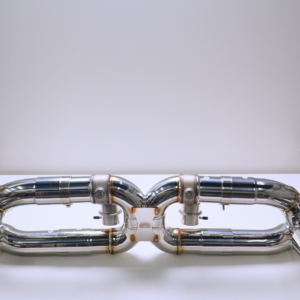When it comes to saving money maintaining your car, changing your own brake pads is one of the best ways. Another thing to consider is whether you should change out just your brake pads or both the brake pads and rotors. Most manufacturers recommend changing the brake pads and rotors at the same time. While we generally agree, if your brake rotors are evenly worn and have sufficient thickness remaining, you can just replace the brake pads.
To perform this DIY, check out this helpful tutorial above from autodoc.co.uk. Detailed steps can be found below.
- Mechanic’s Tool Set
- Metric Hex Bit Socket Set, 3mm to 10mm
- K Tool International Low Profile Jack (3.33 Ton)
- ESCO 10499 Low Profile Flat Top Jack Stands (Pair) (1 required)
- 1/2 Inch Drive Click Torque Wrench (25-250 ft.-lb.)
- 1/2″ Drive Extension Breaker Bar
- Wheel Chocks
- Socket Adapter & Reducer Set
- Brake Pad Spreader Tool
- Medium Strength Thread Locker
- Loctite Silver-Grade Anti-Seize
- Permatex Ultra Disc Brake Caliper Lube
- PB Blaster Penetrating Oil
- Impact Screwdriver
- Putty Knife
- Wheel Bolt Guide For Porsche, Audi, and VW (2 recommended)
- Safety Glasses
- Disposable Gloves
- Textar OE Front Brake Pads - P/N: 2332902, 99635294902
- Textar OE Rear Brake Pads - P/N: 2179203, 99635293903
- Front Left – Brembo OEM Brake Rotor - P/N: 09C09411, 99635140501
- Front Right – Brembo OEM Brake Rotor - P/N: 09C09511, 99635140601
- Rear – Brembo OEM Brake Rotor - P/N: 09666511, 99635240104 (2 required)
- Brake Pad Hardware Kit - P/N: 99635195901 (1 kit required for front)
- Brake Pad Hardware Kit - P/N: 99635295901 (1 kit required for rear)
Wheel bolts: 118 ft-lbs
Caliper bolts: 63 ft-lbs
Step 1: Prepare your vehicle and work area.
- Ensure your car is parked on a flat surface and the brakes are cool.
- Put on eye protection and gloves.
- Gather tools and parts.
Step 2: Extract a small amount of brake fluid from the brake fluid reservoir.
- Extract a little bit of brake fluid from the reservoir to prevent it from overflowing during this procedure.
- To do this, open front compartment area, remove the plastic panel covering brake fluid reservoir.
- Unscrew the brake fluid reservoir cap, remove the mesh filter inside, and extract a little bit of brake fluid using a new turkey baster.
- Save this brake fluid in a clean container, so you can re-use it later.
- Reinstall the brake fluid reservoir cap when you are done to prevent debris from getting in.
Step 3: Raise your vehicle off the ground.
- You can raise your car one corner at a time or raise the entire vehicle.
- To do this, either use a vehicle lift or a jack and jack stands.
- NEVER rely on a jack to keep your car up; use jack stands to safely support your vehicle.
- Also be sure to use wheel chocks to prevent your car from rolling.
- To lift your vehicle on jack stands, check out this helpful video from the YouTube channel CarFanatic.
- Be sure to loosen your wheel bolts before you lift the wheel off the ground.
Step 4: Gain access to the brakes by removing the wheel.
- Remove the wheel using a 19mm socket and breaker bar.
- Place two wheel guide bolts to help you remove the wheel.
Step 5: Remove the brake pad spring clip.
- If you are replacing the brake rotors, start by applying WD-40 or another penetrating oil to all the fasteners that hold the brake caliper in place.
- Remove the black pin which holds in the brake pad spring clip; remove the cotter pin using needle nose pliers, then gently punch out the pin.
- Keep some pressure on the spring clip, so it doesn’t pop out.
Step 6: Remove the brake pads.
- Carefully, pull out the brake pad sensor from the brake pad; disconnect the brake pad sensor completely.
- Using a brake pad spreader, spread out the brake pads. This will prevent the brake pads from catching on the “lip” worn into the rotor when you attempt to take them out. You also want to spread the brake pads out wide enough, so the new brake pads, which are thicker, will fit between the rotor and the brake pistons.
- Next, use a putty knife to separate the brake pads from brake pad dampers (the backings stuck to the pads).
- If you are just replacing your brake pads, skip to Step 10.
- If you are also replacing the brake rotors, do not remove the brake pads just yet and follow the steps below.
Step 7: Remove the brake caliper.
- To replace your brake rotor, you will need to remove the brake caliper.
- Start by removing the brake line bracket which is held on by a 10mm bolt.
- Take string or bungee cord and tie the brake caliper onto the suspension. This will prevent the brake caliper from hanging by the brake line when you remove the caliper.
- Remove the brake caliper, which is held on by two bolts, using a 10mm hex bit socket.
Step 8: Remove the brake rotor.
- Remove the 2 screws holding the brake rotor in place.
- If you have difficulty getting the brake rotor off, apply some penetrating oil to where it meets the hub and use a hammer to lightly tap around the wheel hub area; let the penetrating oil get to work for a few minutes, then use a rubber mallet to loosen the rotor.
- Note: For the rear brakes, make sure your parking brake is not engaged or you won’t be able to get the rotors off.
Step 9: Install the new brake rotor.
- Apply anti-seize to where the rotor meets the wheel hub and to the brake rotor set screws to prevent them from seizing in the future.
- Install the new brake rotor and hand tighten the set screws.
Step 10: Install the new brake pads.
- Apply brake lubricant around the edges of the brake pad to prevent squealing.
- Connect the new brake pad sensors to the brake pads.
- Insert the new brake pads into the brake caliper.
Step 11: Re-install everything.
- Re-install everything in reverse.
- For the brake caliper bolts, apply thread locker and torque them to 63 ft-lbs.
- Hand tighten the 10mm bolt that holds the brake line in place.
- Torque the wheel bolts to 118 ft-lbs and be sure tighten the wheel bolts in a star pattern.
Step 12: Repeat the procedure on each corner.
- The process for the rear brake pads and rotors is nearly identical to that of the front.
- For an overview, check out this video from 2CarPros.
Step 13: Lower the vehicle to the ground.
Step 14: Top off the brake fluid reservoir as necessary.
- Get inside the car and give your brakes a few pumps until the pedal is firm.
- Top off your brake fluid reservoir to just under the max line; do not overfill.
- Re-install the brake fluid reservoir mesh filter, cap, and plastic cover.
- Clean up and put all of your tools away.
- Congrats. You’re all done and just saved a bunch of money!
